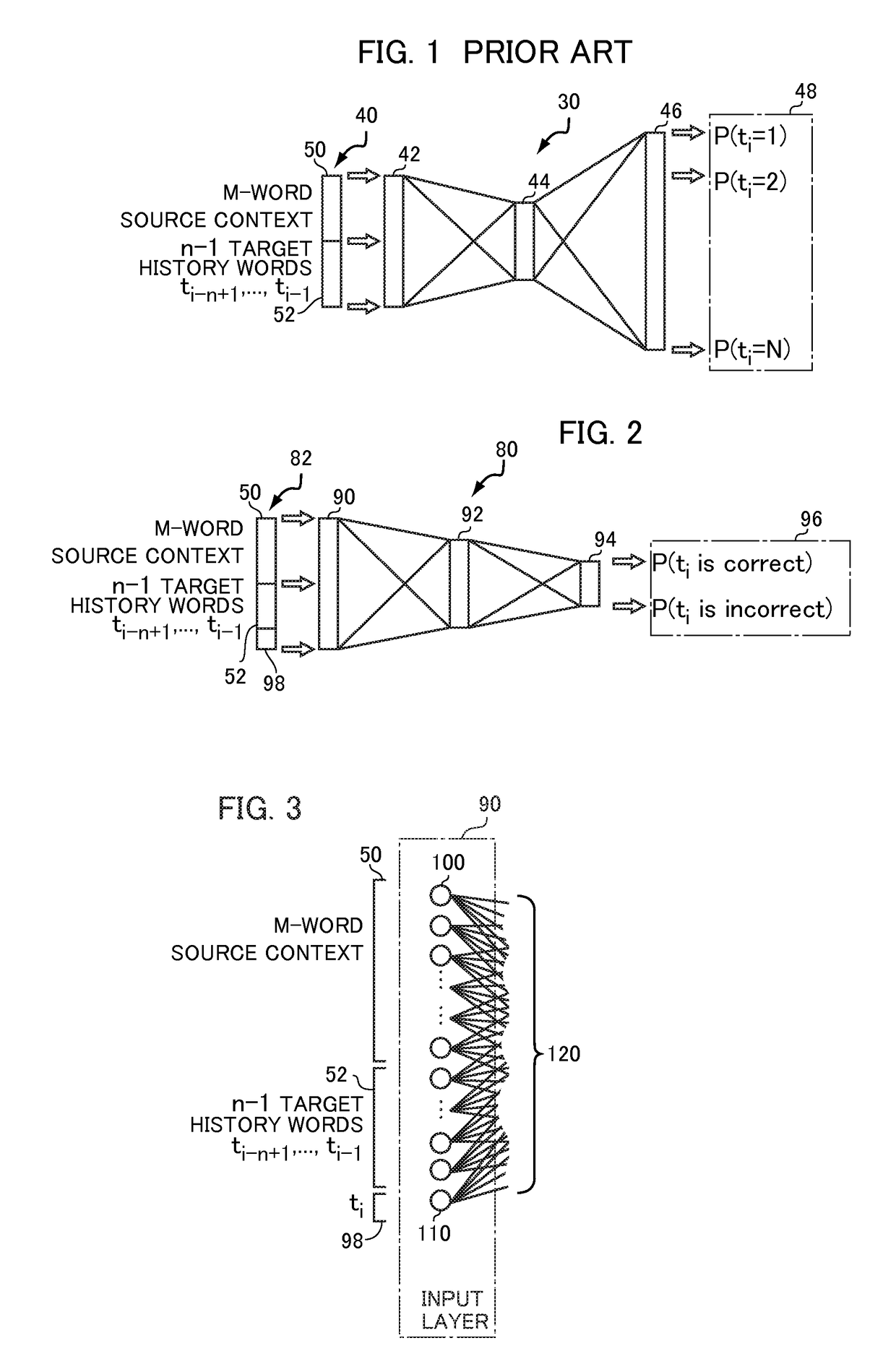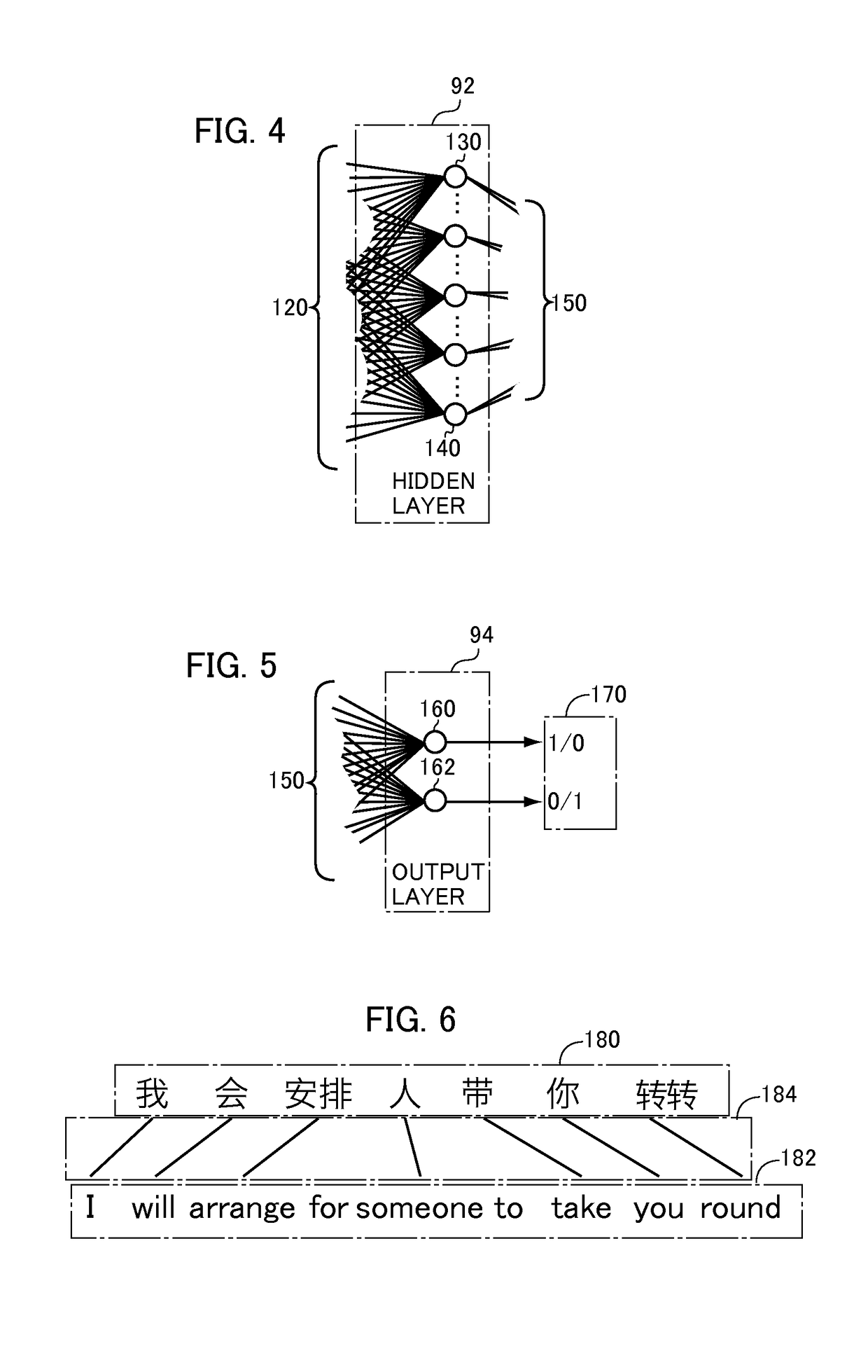Neural network system, and computer-implemented method of generating training data for the neural network
a neural network and neural network technology, applied in the field of statistical machine translation translation translation models, can solve the problems of sacrificing the accuracy of the neural network by self-normalization techniques, the computational cost of using the neural network in a large-vocabulary smt task is quite expensive, and the computational cost is quite huge, so as to avoid the expensive normalization cost, the computational cost of using is quite high, and the effect of avoiding the cost of normalization
- Summary
- Abstract
- Description
- Claims
- Application Information
AI Technical Summary
Benefits of technology
Problems solved by technology
Method used
Image
Examples
example 1
I will banana
EXAMPLE 2
I will arranges
example 3
I will arrangement
[0053]However, Example 1 is not a useful training example, as constraints on possible translations given by the phrase table ensure that will never be translated into “banana”. On the other hand, “arranges” and “arrangement” in Examples 2 and 3 are both possible translations of “” and are useful negative examples for the BNNJM, that we would like our model to penalize.
[0054]Based on this intuition, we propose the use of another noise distribution that only uses ti′ that are possible translations of sai, i.e., t′i∈ U(sai)\{ti}, where U(sai) contains all target words aligned to sai in the parallel corpus.
[0055]Because U(sai) may be quite large and contain many wrong translations caused by wrong alignments, “banana” may actually be included in U(“”). To mitigate the effect of uncommon examples, we use a translation probability distribution (TPD) to sample noise t′1 from U(sai)\{ti} as follows,
q(ti″|sai)=align(sai,ti′)∑ti″∈U(sai)align(sai,ti″)
where align(sai, t′i) is...
PUM
 Login to View More
Login to View More Abstract
Description
Claims
Application Information
 Login to View More
Login to View More - R&D
- Intellectual Property
- Life Sciences
- Materials
- Tech Scout
- Unparalleled Data Quality
- Higher Quality Content
- 60% Fewer Hallucinations
Browse by: Latest US Patents, China's latest patents, Technical Efficacy Thesaurus, Application Domain, Technology Topic, Popular Technical Reports.
© 2025 PatSnap. All rights reserved.Legal|Privacy policy|Modern Slavery Act Transparency Statement|Sitemap|About US| Contact US: help@patsnap.com



